Ultimate VR38DETT Guide – Everything You Need To Know
There’s no real question that the VR38DETT is one of the most incredible engines ever produced. In this guide, we’ll cover everything you need to know and look at the future for the mighty VR.
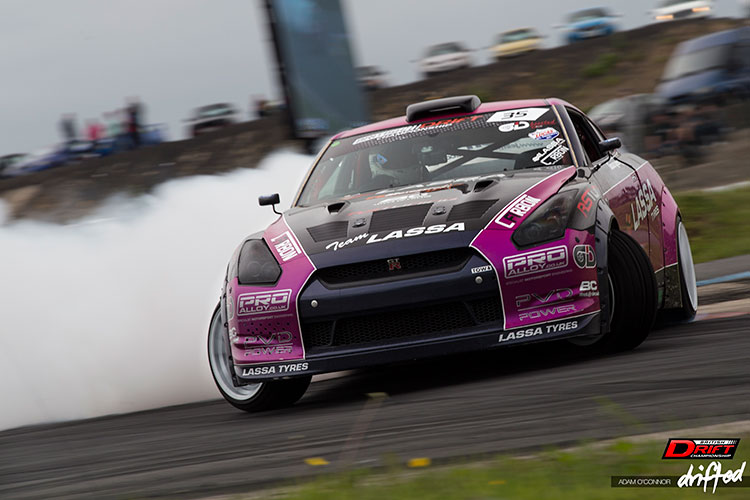
Here, you can click on a particular section within this article, otherwise, scroll down as we take a look at Nissan’s VR38DETT engine.
- Popular VR38DETT questions
- Nissan’s VR history
- VR38DETT tuning
- GT-R history
- Conclusion
- Bonus Nissan VR38DETT content
Introduction
It’s hard to believe that the VR38DETT engine has already been stunning the planet and smashing the record books for over a decade.
Since its original creation, it’s somehow managed to become increasingly extraordinary over time, as it continues to blow the minds of anyone privileged enough to own, or even have the opportunity to drive a VR-powered car.
Packed inside Nissan’s R35 GT-R, the VR38DETT has helped Nissan’s ever-popular Skyline franchise maintain its incredible heritage as quite possibly one of the most cherished brands to be shipped out from the land of the rising sun.
The life of each VR38 begins in Yokohama, Japan, at the hands of four ‘Takumi’ or ‘master craftsmen’ as we know them on this side of the ocean.
Armed with over 100-years of combined experience, Izumi Shioya, Nobumitsu Gozu, Tsunemi Oyama, and leader Takumi Kurosawa, this team of four are the pride of the Nissan plant, and responsible for ensuring every single engine gets built to its absolute best.
“When GT-R production started in 2007, valve clearance adjustment was by machine, but now everything is by hand - measuring, tightening, measuring again. After manual checks and confirmation, only then do we deliver to our customers.”
Watch this inspiring video which shows the inspiring degree of assembly that goes into the birth of each VR38:
Upon the arrival of the VR38 in 2007, it was immediately evident that this 3.8-liter V6, which pushed out 480bhp from the moment it left the hands of Nissan’s craftsmen, was capable of so much more.
In fact, despite these impressive figures, Nissan had barely scratched the surface with releasing the power that the VR38DETT was truly capable of achieving.
Even now, with the current NISMO model hitting 600bhp in stock form, there’s still potential for so much more.
Although the main power fights are taking place within the drag racing scene, this hasn’t stopped Time Attack teams tweaking their VR’s to shave valuable milliseconds, and drifters ensuring that the ultimate smoke show gets produced for their fans!

Although the VR38DETT only ever rolled off the production line in the R35, or Godzilla as you may know it, its sheer endless capabilities that have been proven over the years have seen the powerplant find its way into a gigantic assortment of engine bays across the world, which we’ll dive into more later.
The VR38DETT also made a short appearance in the Juke-R, but Nissan only ever went on to produce 23 models, most of which will never see the light of day! Nonetheless, it was an impressive feat and a car that we’d love to have the opportunity to get our hands on one day!
“Building a 310 km/h car is not a particularly difficult challenge,” said Kazutoshi Mizuno, Chief Vehicle Engineer for the GT-R, former racing team director, and chief racing engineer at Nissan.
“The challenge is to build a car that is stable and quiet at that speed, a car that is comfortable and easy to drive at that speed, a car that has excellent straight-line stability at over 300 km/h, a car that can handle snow and ice and rain at high speed, a car that is also environmentally sound and has very high safety standards.”
“It is my belief that no car mixes these abilities like the Nissan GT-R.”
What’s incredible with the GT-R is its ability to not only be comfortable enough to be a strong consideration as a daily driver, but it also has far more impressive reliability when compared to cars that are equally capable of delivering a similar amount of power.
When put alongside a rival, the Audi R8, a 2017 J.D. Power and Associates report marked the Nissan 10th in initial quality vs. the Audi R8’s ranking of 26th in initial quality.
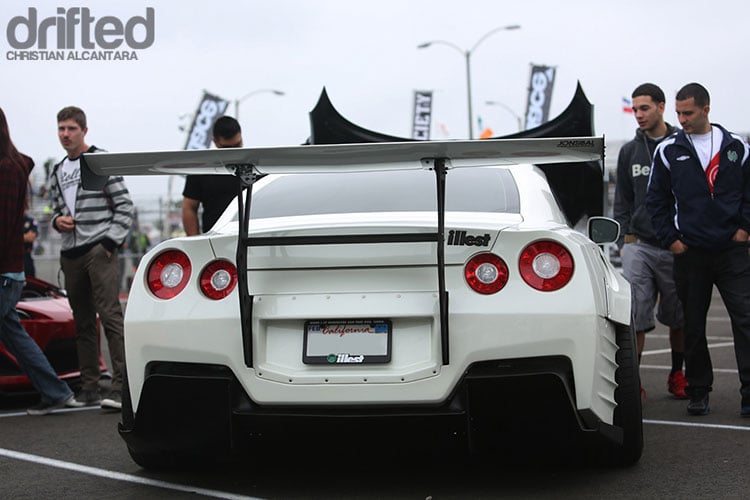
Nissan is so confident in the VR engine that it comes with a six-year, 60k mile warranty. The R8, which matches Porsche’s 911 turbo, comes with just four years and 50k miles.
When it comes to living with the VR38 on a daily basis, its 16mpg city economy and 22mpg on the highway when used in the GT-R, means that its certainly no worse than some everyday cars.
If you’re looking for a daily driver that is spacious, comfortable, capable of 0-62mph in under three seconds before eventually reaching 200mph and street legal, then there are very few options on the market that can get even close to the GT-R!
It may not be the lightest car out there, but motorsport-developed technology delivers a near-unbreakable grip, which it’s easily capable of giving some of the fastest mid-engine supercars valued at twice the price a run for their money.
Let’s take a more in-depth look into the VR38DETT engine, as we answer questions, explain how you can unleash its true potential, and take a look at the history of Nissan’s VR engine line-up.
Popular VR38DETT questions
We have collated the most commonly asked questions on the VR38DETT with our answers below:
What does VR38DETT stand for?
The ‘VR’ engine was born when it became the successor to Nissan’s highly-regarded VQ series. Following the unique engine code is the displacement, which in this case, is 3.8L, which creates the ‘VR38.’ From there, the ‘D’ refers to the dual overhead cam (or DOHC), ‘E’ represents ‘Electronic Fuel Injection,’ and ‘TT’ concludes the name with ‘Twin Turbo.’
Using this representation, you’ll be able to break down most, if not all, of Nissan’s engine name mysteries!
What car has a VR38?
Since the VR38 and VR38DETT is the same engine, it belongs in the engine bay of Nissan’s R35 GT-R but can also commonly find its home in various cars across the world thanks to its convenient swapping potential. It also featured a limited run in Nissan’s awesome Juke-R.
When did the R35 come out?
Nissan’s R35 GT-R initially launched in 2007 and left the factory with an impressive 373bhp. Since then, Nissan has continued to push the boundaries with a reliable setup, with the most recent NISMO version achieving 600bhp!
What does GTR mean?
GTR is an abbreviation that refers to Gran Turismo Racer. This Italian influence was chosen by the Japanese as most cars at the time used Western-style names, to further enhance sales across the pond.
What engine is in R35?
The engine found in Nissan’s R35 GT-R is the 3.7-liter twin-turbo V6, the phenomenal VR38DETT. If you’re keen to know more about it, you’ve certainly come to the right place!
Is the R35 a Skyline?
This question is a somewhat controversial argument across JDM enthusiasts, and many will undoubtedly provide a different opinion to others.
The main issue lies with the fact that the R35 not only came later, but it also veered away from the typical 2.6L, inline-six, RB26DETT engine setup, for which the iconic Skyline GT-R’s were best known.
The GT-R is an entirely different beast in its own right. Skyline GT-R’s are a traditional JDM cult icon, and some low-mileage R34 GT-R’s have already begun fetching higher price tags than a brand new R35 would cost you fresh out of the showroom!
Why is GTR banned in the US?
We often get asked this question, but the truth of the matter is that although the R35 isn’t banned, the R32, R33, and R34 Skylines are all ‘illegal’ in the US until their 25-year import restrictions become lifted.
Since these Skylines weren’t produced in the US and would require importing into the country, they are not USDOT compliant and, therefore, not legal in the US. For this reason means, the earlier models of the Nissan Skyline R34 will become legal to import into the US in 2025.
How much horsepower can an upgraded vr38dett engine have?
As always, this is the million-dollar question - quite literally!
At the current moment in time, ETS is claiming to have the record horsepower achieved from a VR38DETT engine, with an unfathomable 3,046 wheel hp, or approximately 3,500hp at the crank. This phenomenal setup provided them with a 6.88 second ¼ mile time.
Each time we think they have surely reached the upper limit of the potential that the VR38DETT has to offer, various tuning houses keep proving that wrong by smashing the record time and time again!
Nissan’s VR history
It may not be the most exciting story ever written since it’s one of the youngest engine families in Nissan’s comprehensive catalog, but the VR line-up has achieved a tremendous amount of success in its brief history.
VR30DDTT
It all began on December 15th, 2015, when Inifiniti, which is the luxury vehicle division for Nissan, launched its brand new VR30DDTT engine in their Q50 sedan, which featured two variations - a 300hp option, and the improved 400hp alternative.
Although it was the first engine in the family, it has continued to be produced to the present day, with it most commonly found in the somewhat awkwardly named present-day Nissan Skyline. Which, in case you’ve not read the rest of the guide, couldn’t be much farther from a GT-R if it tried!
The 3.0L V6 twin-turbo was the lightest, most powerful, cleanest, and most fuel-efficient that Infiniti has ever offered. These mostly dull stats meant that it prioritizes fuel efficiency over raw power, and it certainly won’t be competing with the VR38DETT for anything other than mpg anytime soon!
Alongside the Q50 and the Skyline, Infiniti’s Q60 was the only other car to utilize the VR30DDTT.
With inspiration from two engines, the VG30DETT, found in the Z32 TT, and a few small touches from our ol’ buddy, the VR38DETT, Nissan opted to use direct injection on this model, hence the DDTT name.
Although Infiniti has stated that the technology found in the VR30 is far more advanced compared to the VR38DETT, it’s rather clear evidence that newer is not always more exciting in the automotive industry.
Although the VR30DDTT was the first-born VR engine, it was the younger brother that would arrive just two years later that gave the VR line-up the respect that the family deserved, as its birth stunned the automotive history and ensured that car tuning would reach entirely new levels of incredible potential.
VR38DETT
Launched in 2007, the VR38DETT immediately took the world by storm as a new supercar killer arrived on the scene and caused an unimaginable upset, the mighty Nissan GT-R!
Thankfully, despite its name, the VR38DETT is based upon the VQ-series engines, which you’ll find in the Fairlady/370Z, than the VR30DDTT.
Luckily, the VQ37VHR is an outstanding engine and is also capable of handling forced induction well. We’ve taken a comprehensive look into both options in our 370z turbo kit and supercharger kit guides.
At the time of release, the brand-new VR38DETT was capable of just 480hp, but both Nissan and the top tuners knew that this block was capable of providing so much more than this conservative power figure, and the power increases began.
As the years passed, Nissan kept upgrading the power with each update. In 2010, they achieved 530hp by merely improving the intake and providing a larger bore exhaust.
In 2011, they would then introduce uprated fuel injectors, a tweaked ECU and a new blow-off valve. These small upgrades enabled them to unlock another 15hp, taking the total power to 545hp.
From here, they would later raise the boost to 13.5psi and once again re-designed the exhaust system to improve the flow of gases, the new output? 565hp!
Over a decade later and with numerous tried-and-tested revisions under their belt, NISMO has most recently pushed the car to 600hp in their flagship factory model thanks to uprated turbos and fuel and ignition systems.
Although 600hp is undoubtedly an extraordinary figure for a reliable everyday production engine, there’s no doubt that Nissan has to be conservative with just how far they go with increasing the power.
There’s no question that the VR38DETT is capable of so much more than the 600hp, but if you plan to go beyond this threshold, then they’re going to have to consider uprating many parts to ensure its reliability for daily use.
There’s undoubtedly a lot of complications for Nissan when it comes to emissions, and there’s only so far that you can go before Greta Thunberg begins screaming in your ear.
With emissions for new cars getting more scrutinized than ever, it begins to make you wonder whether this could be one of the last genuinely incredible petrol engines ever to be produced, or whether another manufacturer still has a new trick hidden up their sleeve.
Given that there are many VR38’s out there which have clocked well over 100,000 miles, it’s a true testament to what an exceptional engine Nissan has produced, especially when they are continually testing the boundaries of power for production cars.
We’ll dig a little deeper into the VR38DETT’s tuning potential next…
VR38DETT tuning
As we’ve mentioned previously, if your pockets are deep enough, then the VR38 genuinely is one of the most capable engines on the planet if you’re looking to achieve enormous power figures.
Even if significant power gains aren’t your thing, you don’t need to buy the price-hiked NISMO model to reach the coveted 600hp milestone.
Why is this a milestone? Well, beyond 600hp, things begin to get a little more complicated.
If you’re happy to settle for 600hp, then the later model (2012-) variations would only need an uprated ECU.
If you’ve got one of the pre-2012 models, then 500-550 is a more likely figure to be expected from the ECU upgrade and an aftermarket exhaust.
Although the stock turbos are capable of providing more than 600hp, you’re likely to push the engine internals and the transmission to their limits, which can sometimes result in disastrous consequences.
For those reasons, we’d highly recommend upgrading those if you intend to go for crazy power.
However, as you’ve undoubtedly noticed, going beyond 600hp with the VR38 is far from uncommon. Firstly, you’ll need to look at upgrading the internals.
After that, the main focus will be on the transmission, before looking at some of the smaller, and thankfully cheaper, supporting mods such as a map sensor.
If you’re looking to go beyond 1,000hp, it’s time to empty your pocket once again, as big turbos and stroker kits come into the equation.
From there, it’s onwards and upwards, and with the 3,000hp milestone already being smashed, who knows what’s next?!
GT-R history
We have talked about the VR38 a lot at this point, but what about the car that housed the engine, the GT-R, and it’s history?
KPGC10 (Hakosuka)
The first-ever GT-R to be released by Nissan in 1969 was one of the most iconic cars ever built, the Hakosuka, or KPGC10. A car that still looks incredible today, and has undoubtedly stood the test of time.
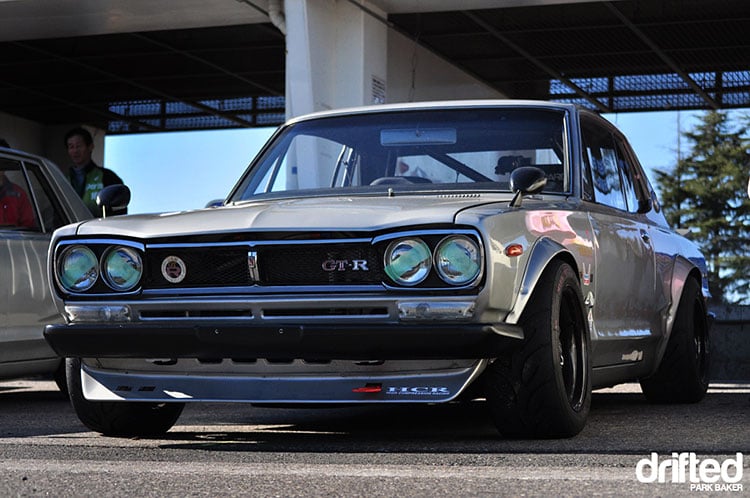
With a 160hp 2.0L DOHC inline-six engine, it was a legend in its day, but it certainly wouldn’t be capable of giving the R35 a run for its money around the circuit!
KPGC110 (Kenmeri)
After three successful years on the market, its successor, the KPGC110, or ‘Kenmeri’ as it’s often known, was introduced to the 1972 Tokyo Motor Show.
Unfortunately, this was unsuccessful, mostly due to a gasoline crisis in the early seventies, which left high-performance sports cars looking like they may become a dying breed.
Just 197 Kenmeri’s eventually sold during the single year that it was up for sale, and the GT-R looked like it may have died before it truly began.
Nissan Skyline R32 GT-R
Sixteen years later, Nissan opted to revive the brand, with the impending surge of incredible cars of the late eighties, which eventually went into the nineties, rolling out of the showrooms.

The demand had certainly returned, and the R32 featured the brand new RB26DETT powerplant, which is still one of the most inspiring engines built ’til the present day.
Nissan R33 GT-R
As the R33 entered the market, it earned a mixed response from enthusiasts.
Although it featured improved technology, it also came with its downsides.
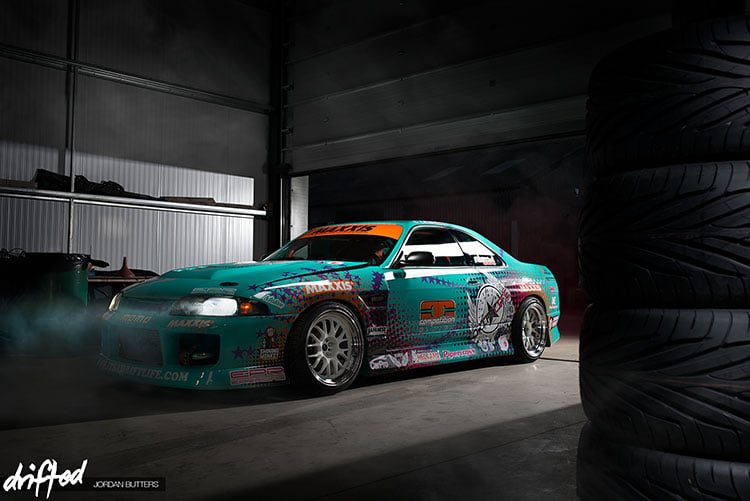
Not only had the engine remained the same, but they’d also added extra weight. And at the same time, although it’s a matter of taste, arguably made it worse-looking than its predecessor.
Nissan Skyline R34 GT-R
After a mixed reaction with the R33, the R34 received a far superior market reaction.
With stunning modern-day styling and various models such as the Z-Tune, which featured a 2.8L displacement pushed out 500hp and a 0-62 time of 3.8 seconds and a top speed of 203mph.
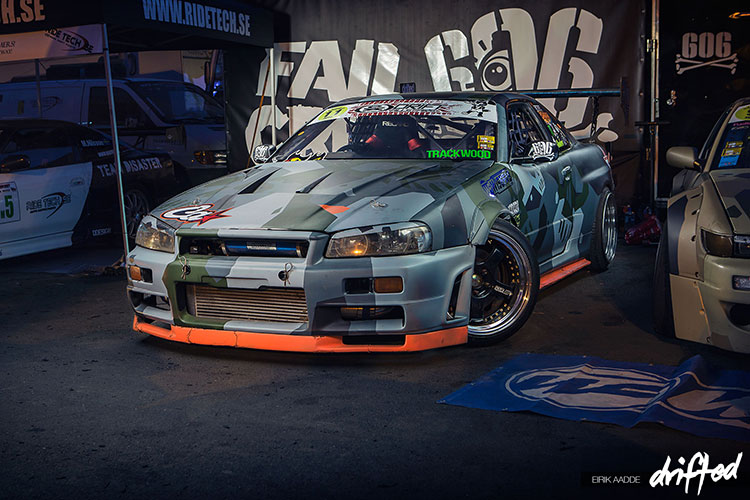
The success of the R34 GT-R certainly set the bar high and meant that the R35 GT-R certainly had big expectations to live up to. Did it meet them? We believe so!
The R34 has become a real JDM classic; it was clearly Paul Walker’s favorite car, and that, in turn, meant that The Fast and the Furious franchise were also keen to endorse the GT-R heavily.
Nissan R35 GT-R
Five years after Nissan ceased production of the R34 GT-R, the R35 hit the market, and immediately took it by storm.
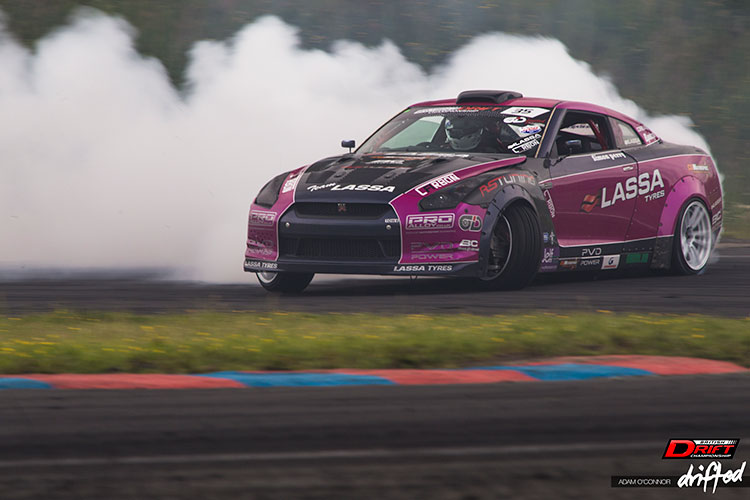
Since then, it’s not only become a tuner favorite, but it’s won itself several Championships in various GT3 and SuperGT Championships, not to forget its undeniable success in drag racing and drifting!
Conclusion
The VR38DETT incredible modern-day marvel, with some of the most impressive technology and an astonishing price-tag, it’s easy to see why so many people have been so keen to keep the GT-R dream alive to the present day.
The GT-R is undoubtedly Nissan’s most significant success, which has lasted several decades. Who knows what the future holds for the mighty GT-R?
There is some speculation that the R35 may soon be coming to an end, since the typical life-cycle of a car is around seven years, and since the R35 has already lasted a decade, could it be coming to an end?
With over 200,000 sales for the VR38DETT, we’re excited about the future. We can’t wait for the day we’ll be able to pick one up for $500 at the local scrapyard. (Hey, we can be optimistic, right?!)
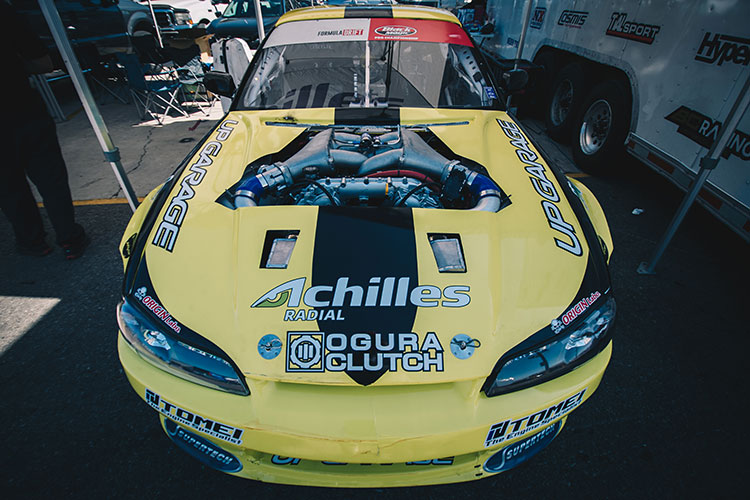
With the launch of the 2020 NISMO, it would appear that Nissan isn’t yet ready to end the VR38DETT, but who knows what the future holds?
Have Nissan got a predecessor up their sleeve?
Will we ever get to see a petrol engine from any manufacturer that is capable of knocking the VR38DETT off of its pedestal?
Only time will tell. Until then, we shall praise the almighty VR38DETT
Bonus Nissan VR38DETT related content
We’ve selected some of our favorite VR38DETT YouTube picks for your viewing pleasure!
Are you interested in building a high-horsepower VR38DETT? How does 3,000hp sound? High Performance Academy chats with Lucas English as he explains how to achieve crazy power figures.
Check out this wild S13/200X shredding tires at the circuit! Warning: Imminent eargasm!
If you’re looking to transplant the VR38DETT into something a little different, then let this Nissan Patrol serve as an inspiration!
Since we’re talking about ridiculous swaps, you have GOT to check out this utterly absurd Hiace van!
If hillclimb is your thing, you’re going to love this.
Is the S15 and the VR38DETT the perfect combination? Here’s one tearing up the UK streets to help you make your mind up!
Another awesome swap is this Toyota GT86, with a 4.1L stroker engined VR38DETT. Flame on!
How could we possibly end this guide without a sound compilation video?! You’re welcome.
Thank you for reading our Nissan VR38DETT guide
If you enjoyed this article, then please share it with the sharing buttons at the side and the bottom of your screen.


 (4 votes, average: 4.50 out of 5)
(4 votes, average: 4.50 out of 5)














